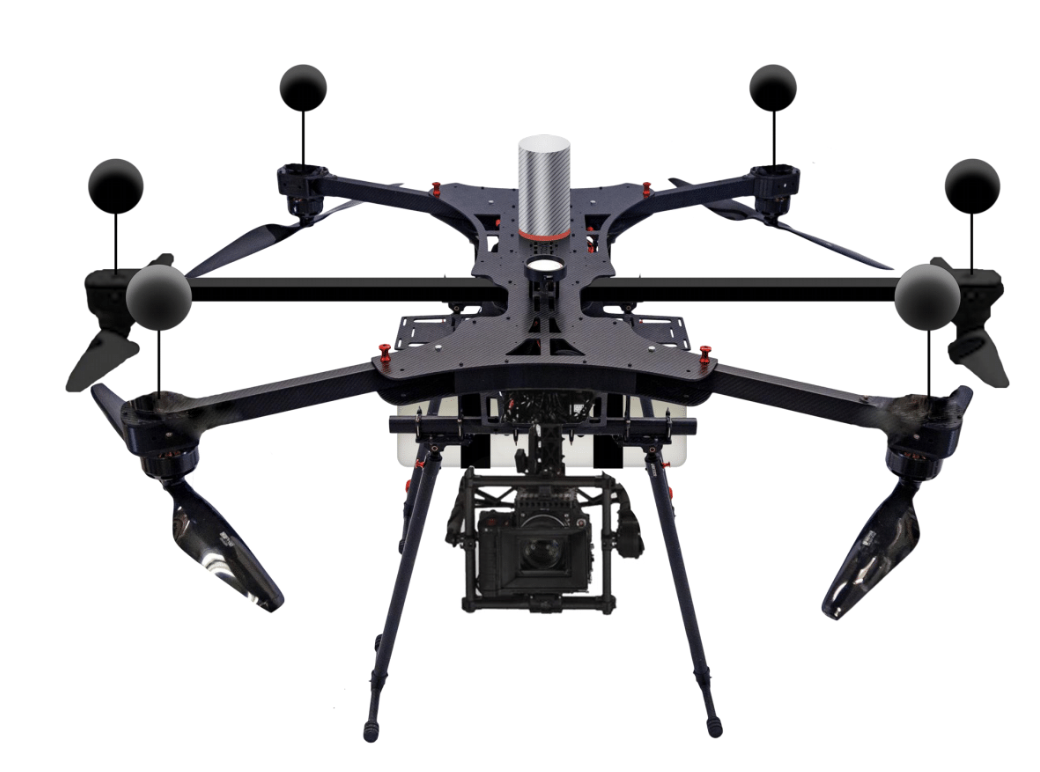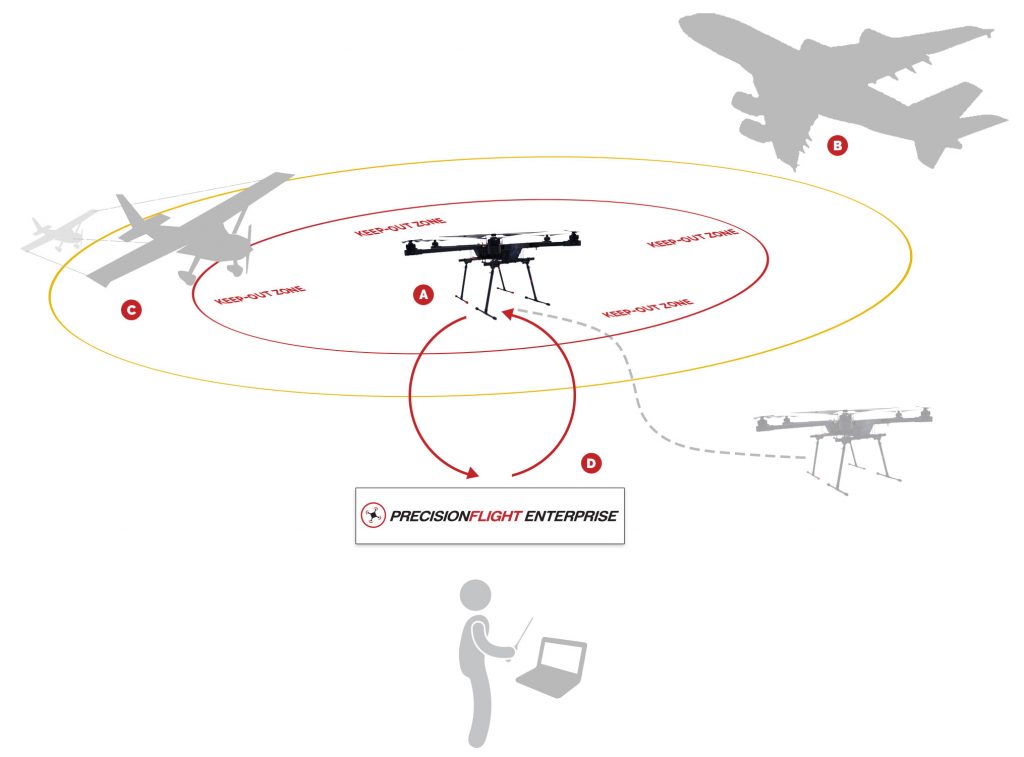Introducing the industry’s first Beyond Visual Line of Sight (BVLOS)-enabled, multi-rotor drone platform.

The drone incorporates industry-leading technology to automatically identify all cooperative and non-cooperative aircraft within a 10 km radius, ensuring airspace deconfliction well before a potential confrontation. The platform was designed based on the findings and recommendations of the Federal Aviation Administration (FAA) Pathfinder Report, which serves as a blueprint for enterprises to conduct BVLOS drone operations.
The Safety Case

Through Pathfinder fieldwork, we’ve identified three pieces of technology that should be required for safe BVLOS operations. The technology components were incorporated into a multi-rotor drone that can fly two hours and up to 40 miles in one flight to support safe, long-range operations.
| BVLOS Flight Requirements | ||
|---|---|---|
| A | sUAS TrackingA BVLOS solution must include hardware- and/or software-based systems that transmit the live trajectory information of the sUAS. |
LATAS—a combined set of geospatial, software, and hardware tools to facilitate safe drone operation—includes a GPS locator that persistently broadcasts the drone’s location and trajectory. |
| B | Real-time Manned Aircraft Data FeedCooperative aircraft, and their location and trajectory, must be displayed at one second latency or better. |
LATAS is the only BVLOS flight system to carry HARRIS’s NextGen real-time aircraft location feed, including Automatic Dependent Surveillance-Broadcast (ADS-B) and radar—all with a latency of one second. |
| C | Detect and Avoid SystemTo detect non-cooperative aircraft, a BVLOS system is required to have an aircraft detect and avoid system with a minimum range of three nautical miles in a 360° field of regard. |
SARA's Acoustic-Based Aircraft Detection (ABAD) system, available through an exclusive partnership with PrecisionHawk, detects non-cooperative aircraft. |
| D | DisplayThe assistive technology portfolio must present alerts, visual and audible, to the pilot. |
PrecisionFlight Enterprise, PrecisionHawk’s flight planning and execution software, features integrated BVLOS systems management and display. |
“Under the regulatory framework for conducting drone operations, drone pilots are required to ‘see and avoid’ other aircraft. Easily done on an aircraft with humans in the cockpit, this is far more challenging for a drone pilot located on the ground,” said Allison Ferguson, director of airspace safety at PrecisionHawk. “This is where choosing the right assistive technology is critical to safe BVLOS flight.”
Realize Unprecedented Operational Efficiency
Any company with large infrastructure investments over vast distances could reap significant benefits from BVLOS drone operations. Under our own commercial BVLOS waiver, we’ve identified opportunities to save as much as $180 for every mile of data capture (when compared to traditional methods).
“With the Pathfinder Report as the foundation, PrecisionHawk has developed a unique perspective on what it takes to fly BVLOS from both a service, training and technology perspective,” Chasen continued. “Through our research and exclusive technology partnerships, we are well-positioned to bring this BVLOS flight solution to market and support other companies as they set out to meet the recommendations for BVLOS flight.”
This week, at AUVSI XPONENTIAL in Denver, Colo., at booth 1418. For more information on PrecisionHawk’s BVLOS consulting and training program or the multi-rotor BVLOS drone platform visit precisionhawk.com/bvlos. Or speak with an expert.